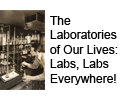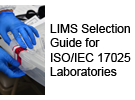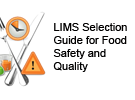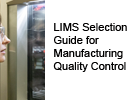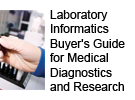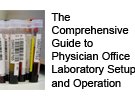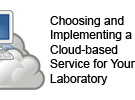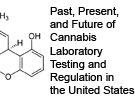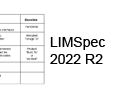Difference between revisions of "User:Shawndouglas/sandbox/sublevel13"
Shawndouglas (talk | contribs) |
Shawndouglas (talk | contribs) |
||
| Line 23: | Line 23: | ||
'''Note''': Any citation leading to a software vendor's site is not to be considered a recommendation for that vendor. The citation should however still stand as a representational example of what vendors are implementing in their systems. | '''Note''': Any citation leading to a software vendor's site is not to be considered a recommendation for that vendor. The citation should however still stand as a representational example of what vendors are implementing in their systems. | ||
== | ==Broad testing within the industry== | ||
A feed testing [[laboratory]] can operate within a number of different | A feed testing [[laboratory]] can operate within a number of different research and development (R&D; academic and industry), production, and [[public health]] roles. They can<ref name="WardObtain24">{{cite web |url=https://animal.ifas.ufl.edu/media/animalifasufledu/dairy-website/ruminant-nutrition-symposium/archives/12.-WardRNS2024.pdf |format=PDF |author=Ward, R. |title=Obtaining value from a feed/forage lab engagement |work=Florida Ruminant Nutrition Symposium |date=27 February 2024 |accessdate=28 May 2024}}</ref>: | ||
*act as a third-party consultant, interpreting analytical data; | *act as a third-party consultant, interpreting analytical data; | ||
| Line 35: | Line 35: | ||
*report accurate and timely results to stakeholders, including those responsible for monitoring public health. | *report accurate and timely results to stakeholders, including those responsible for monitoring public health. | ||
This wide variety of | This wide variety of activities and workflows within these major roles highlights several aspects of the labs operating in the animal feed sector. First, like the more human-based food and beverage industry, the types of testing will vary based upon the role. From R&D and pre-production optimization and [[quality assurance]] (QA) to production and post-production [[quality control]] (QC) and regulatory safety, analytical workflows can differ, sometimes significantly, in the food and beverage industry.<ref name="DouglasFoodBevTest22">{{cite web |url=https://www.limswiki.org/index.php/LIMS_Q%26A:What_types_of_testing_occur_within_a_food_and_beverage_laboratory%3F |title=LIMS Q&A:What types of testing occur within a food and beverage laboratory? |author=Douglas, S.E. |work=LIMSwiki |date=August 2022 |accessdate=11 June 2024}}</ref> This is similarly true for labs in the animal feed industry. As such—regulations and standards aside—we can draw similar parallels in the test types found in feed analysis labs. | ||
Second—and also similar to food and beverage testing<ref name="DouglasFoodBevTest22" />—the activities and workflows listed above also highlight the cross-disciplinary nature of analyzing animal feed ingredients and products, and interpreting the resulting data. The human [[Biology|biological]] sciences, [[Veterinary medicine|veterinary sciences]], [[environmental science]]s, [[chemistry]], [[microbiology]], [[radiochemistry]], [[botany]], [[epidemiology]], and more may be involved within a given animal feed analysis laboratory.<ref>{{Cite journal |last=Schnepf |first=Anne |last2=Hille |first2=Katja |last3=van Mark |first3=Gesine |last4=Winkelmann |first4=Tristan |last5=Remm |first5=Karen |last6=Kunze |first6=Katrin |last7=Velleuer |first7=Reinhard |last8=Kreienbrock |first8=Lothar |date=2024-02-06 |title=Basis for a One Health Approach—Inventory of Routine Data Collections on Zoonotic Diseases in Lower Saxony, Germany |url=https://www.mdpi.com/2813-0227/4/1/7 |journal=Zoonotic Diseases |language=en |volume=4 |issue=1 |pages=57–73 |doi=10.3390/zoonoticdis4010007 |issn=2813-0227}}</ref><ref name="PFPLSWHumanAnim18">{{cite web |url=https://www.aphl.org/programs/food_safety/APHL%20Documents/LBPM_Dec2018.pdf |format=PDF |title=Human and Animal Food Testing Laboratories Best Practices Manual |author=Partnership for Food Protection Laboratory Science Workgroup |date=December 2018 |accessdate=28 May 2024}}</ref><ref name=":0">{{Cite journal |last=Wood |first=Hannah |last2=O'Connor |first2=Annette |last3=Sargeant |first3=Jan |last4=Glanville |first4=Julie |date=2018-12 |title=Information retrieval for systematic reviews in food and feed topics: A narrative review |url=https://onlinelibrary.wiley.com/doi/10.1002/jrsm.1289 |journal=Research Synthesis Methods |language=en |volume=9 |issue=4 |pages=527–539 |doi=10.1002/jrsm.1289 |issn=1759-2879}}</ref> Given this significant cross-disciplinarity, it's can be challenging to characterize the full spectrum of testing found within feed testing labs. | |||
For the rest of this article, we'll take a similar approach to the food and industry<ref name="DouglasFoodBevTest22" /> and break down testing by the various roles feed testing labs can fill. | |||
==Testing within the primary roles of a feed lab== | |||
The type of testing occurring within a feed lab will vary depending on the role it plays within the larger framework of industry needs. The following subsections examine the three primary roles of these labs and the testing required to meet their goals. | |||
===R&D roles=== | |||
===Pre-manufacturing and manufacturing roles=== | |||
===Post-production regulation and safety roles=== | |||
==Conclusion== | ==Conclusion== | ||
Revision as of 19:30, 11 June 2024
|
|
This is sublevel13 of my sandbox, where I play with features and test MediaWiki code. If you wish to leave a comment for me, please see my discussion page instead. |
Sandbox begins below
[[File:|right|450px]] Title: What types of testing occur within an animal feed testing laboratory?
Author for citation: Shawn E. Douglas
License for content: Creative Commons Attribution-ShareAlike 4.0 International
Publication date: June 2024
Introduction
This brief topical article will ...
Note: Any citation leading to a software vendor's site is not to be considered a recommendation for that vendor. The citation should however still stand as a representational example of what vendors are implementing in their systems.
Broad testing within the industry
A feed testing laboratory can operate within a number of different research and development (R&D; academic and industry), production, and public health roles. They can[1]:
- act as a third-party consultant, interpreting analytical data;
- provide research and development support for new and revised formulations;
- provide analytical support for nutrition and contaminant determinations;
- provide development support for analytical methods;
- ensure quality to specifications, accreditor standards, and regulations;
- develop informative databases and data libraries for researchers;
- manage in-house and remote sample collection, labeling, and registration, including on farms; and
- report accurate and timely results to stakeholders, including those responsible for monitoring public health.
This wide variety of activities and workflows within these major roles highlights several aspects of the labs operating in the animal feed sector. First, like the more human-based food and beverage industry, the types of testing will vary based upon the role. From R&D and pre-production optimization and quality assurance (QA) to production and post-production quality control (QC) and regulatory safety, analytical workflows can differ, sometimes significantly, in the food and beverage industry.[2] This is similarly true for labs in the animal feed industry. As such—regulations and standards aside—we can draw similar parallels in the test types found in feed analysis labs.
Second—and also similar to food and beverage testing[2]—the activities and workflows listed above also highlight the cross-disciplinary nature of analyzing animal feed ingredients and products, and interpreting the resulting data. The human biological sciences, veterinary sciences, environmental sciences, chemistry, microbiology, radiochemistry, botany, epidemiology, and more may be involved within a given animal feed analysis laboratory.[3][4][5] Given this significant cross-disciplinarity, it's can be challenging to characterize the full spectrum of testing found within feed testing labs.
For the rest of this article, we'll take a similar approach to the food and industry[2] and break down testing by the various roles feed testing labs can fill.
Testing within the primary roles of a feed lab
The type of testing occurring within a feed lab will vary depending on the role it plays within the larger framework of industry needs. The following subsections examine the three primary roles of these labs and the testing required to meet their goals.
R&D roles
Pre-manufacturing and manufacturing roles
Post-production regulation and safety roles
Conclusion
References
- ↑ Ward, R. (27 February 2024). "Obtaining value from a feed/forage lab engagement" (PDF). Florida Ruminant Nutrition Symposium. https://animal.ifas.ufl.edu/media/animalifasufledu/dairy-website/ruminant-nutrition-symposium/archives/12.-WardRNS2024.pdf. Retrieved 28 May 2024.
- ↑ 2.0 2.1 2.2 Douglas, S.E. (August 2022). "LIMS Q&A:What types of testing occur within a food and beverage laboratory?". LIMSwiki. https://www.limswiki.org/index.php/LIMS_Q%26A:What_types_of_testing_occur_within_a_food_and_beverage_laboratory%3F. Retrieved 11 June 2024.
- ↑ Schnepf, Anne; Hille, Katja; van Mark, Gesine; Winkelmann, Tristan; Remm, Karen; Kunze, Katrin; Velleuer, Reinhard; Kreienbrock, Lothar (6 February 2024). "Basis for a One Health Approach—Inventory of Routine Data Collections on Zoonotic Diseases in Lower Saxony, Germany" (in en). Zoonotic Diseases 4 (1): 57–73. doi:10.3390/zoonoticdis4010007. ISSN 2813-0227. https://www.mdpi.com/2813-0227/4/1/7.
- ↑ Partnership for Food Protection Laboratory Science Workgroup (December 2018). "Human and Animal Food Testing Laboratories Best Practices Manual" (PDF). https://www.aphl.org/programs/food_safety/APHL%20Documents/LBPM_Dec2018.pdf. Retrieved 28 May 2024.
- ↑ Wood, Hannah; O'Connor, Annette; Sargeant, Jan; Glanville, Julie (1 December 2018). "Information retrieval for systematic reviews in food and feed topics: A narrative review" (in en). Research Synthesis Methods 9 (4): 527–539. doi:10.1002/jrsm.1289. ISSN 1759-2879. https://onlinelibrary.wiley.com/doi/10.1002/jrsm.1289.
